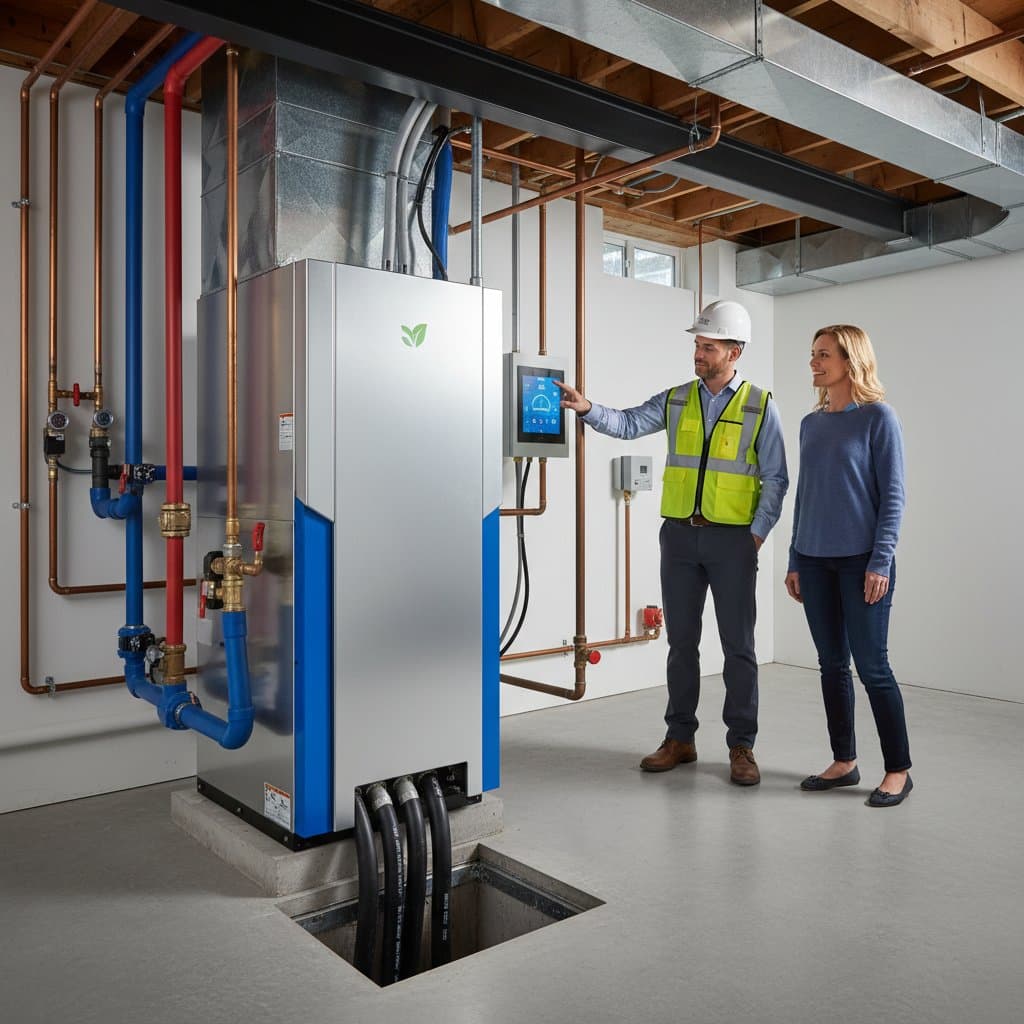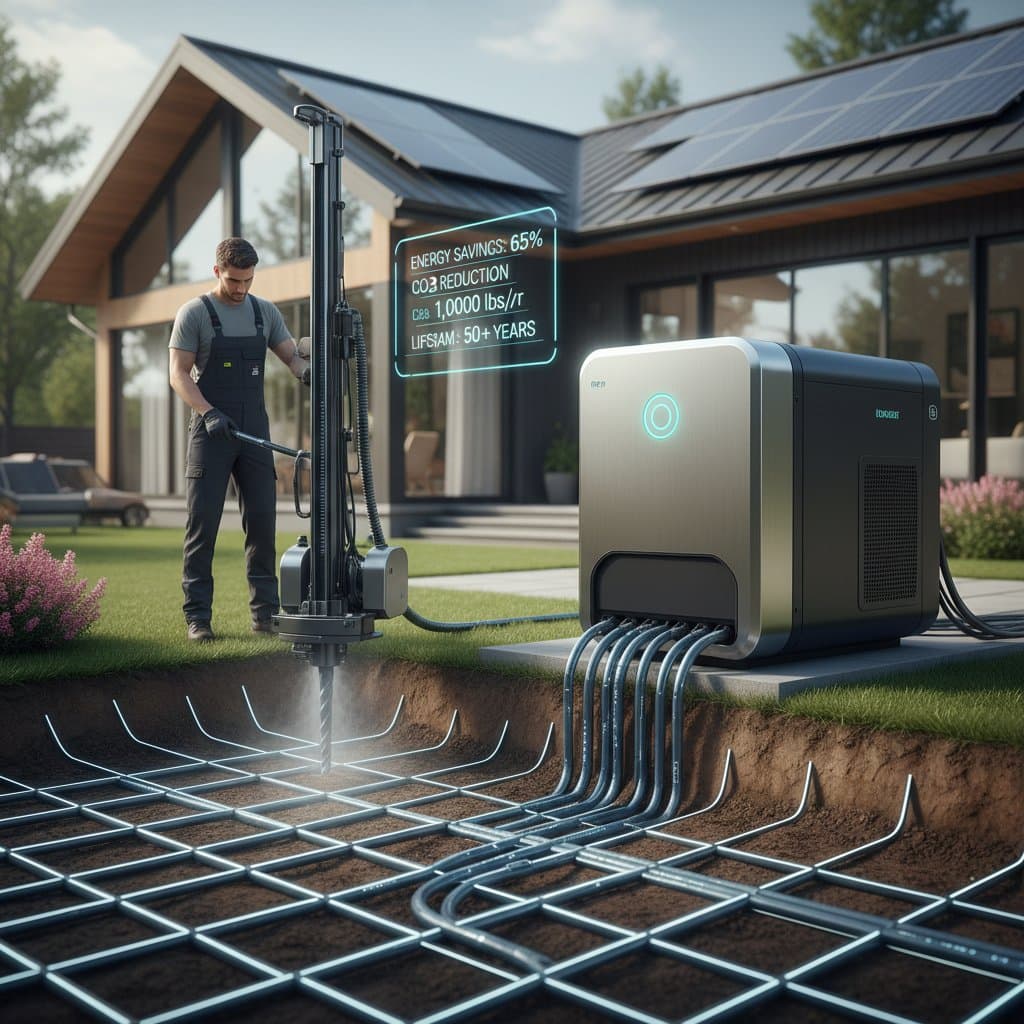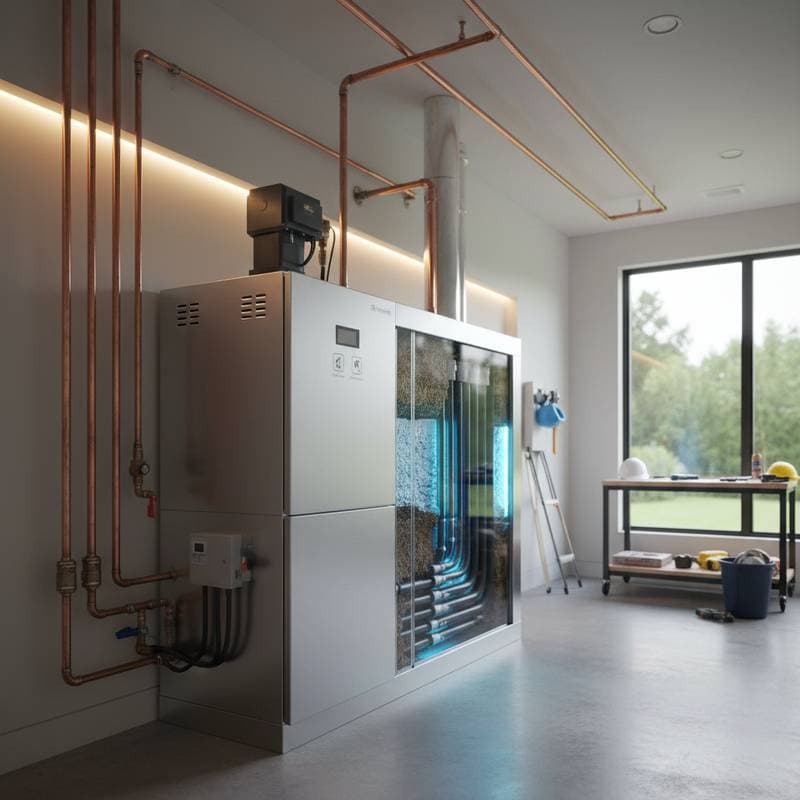Geothermal Cooling: Reducing Energy Bills by 30 to 70 Percent
Geothermal cooling systems utilize the stable temperatures found underground to provide efficient climate control for homes. These systems draw on the earth's natural thermal energy, offering a reliable alternative to traditional air conditioning methods. Homeowners benefit from lower energy consumption and enhanced comfort throughout the year.
The technology behind geothermal cooling involves heat exchange with the ground, which maintains a consistent temperature of around 55 degrees Fahrenheit in many regions. This steady baseline allows the system to cool indoor spaces with minimal electricity use compared to conventional units that rely on outdoor air. As energy costs rise, such innovations become essential for sustainable living.
Understanding Geothermal Cooling Technology
Geothermal cooling operates through a closed-loop system that circulates fluid via underground pipes to absorb or release heat. In summer, the cooler earth absorbs excess heat from the home, effectively cooling the interior. This process reverses in winter for heating, making the system versatile for all seasons.
Key components include the ground loop, which consists of high-density polyethylene pipes buried horizontally or vertically depending on available space. A heat pump then processes the exchanged energy to regulate indoor temperatures. Modern units achieve efficiencies up to 400 percent, far surpassing the 100 percent efficiency of standard air conditioners.
Installation requires professional assessment of soil conditions and property layout. Horizontal loops suit larger lots, while vertical loops work for smaller areas by drilling deeper. Both configurations ensure long-term performance with minimal maintenance.
Key Benefits for Homeowners
One primary advantage is the substantial reduction in energy bills, often by 30 to 70 percent. This savings stems from the system's reliance on the earth's free thermal energy rather than electricity-intensive compressors. Over time, these lower operational costs offset the initial investment.
Environmental impact represents another significant benefit. Geothermal systems produce no direct emissions and use refrigerants with low global warming potential. They contribute to reduced reliance on fossil fuels, aligning with broader goals for carbon-neutral homes.
Comfort levels improve due to even temperature distribution and quiet operation. Unlike traditional AC units that cycle on and off, geothermal systems maintain steady conditions without drafts or noise. Indoor air quality also enhances as these systems often integrate with advanced filtration.
Durability adds value, with ground loops lasting 50 years or more and heat pumps warrantied for 25 years. This longevity minimizes replacement needs and repair expenses, providing peace of mind for long-term homeowners.
Installation Process and Considerations
Begin the installation by consulting a certified geothermal contractor for a site evaluation. This step involves analyzing soil type, water table, and available land to determine the optimal loop design. Professionals use software to calculate the system's size based on home square footage and insulation quality.
Excavation follows, where crews install the ground loop using trenching equipment for horizontal setups or drilling rigs for vertical ones. The process typically spans one to two weeks, depending on complexity. Once the loop is in place, the heat pump connects indoors, often in a basement or utility room.
Permitting and rebates play a role in planning. Many local governments offer incentives for renewable energy installations, reducing upfront costs. Federal tax credits, such as those under energy efficiency programs, can cover 30 percent of expenses, making the project more accessible.
Homeowners should consider integration with existing HVAC systems. Ducted setups work seamlessly with current ductwork, while ductless options suit additions or renovations. Retrofitting older homes requires careful duct sealing to maximize efficiency.
Costs, Savings, and Return on Investment
Initial costs range from 20,000 to 40,000 dollars for a typical single-family home, varying by system size and loop type. Vertical installations tend to cost more due to drilling but save space. Financing options, including home equity loans or green energy grants, help spread payments.
Annual savings average 1,000 to 2,000 dollars on utility bills, based on location and usage patterns. In warmer climates, cooling demands amplify these figures. Payback periods usually fall between five and ten years, after which the system generates pure savings.
Long-term financial benefits extend beyond bills. Increased home value accompanies geothermal installations, with appraisers recognizing the energy-efficient upgrade. Insurance premiums may decrease due to lower fire risks from reduced electrical loads.
To calculate personal ROI, homeowners can use online estimators that factor in local energy rates and home specifics. Consulting multiple quotes ensures competitive pricing and tailored solutions.
Steps to Adopt Geothermal Cooling
-
Research local providers and review certifications from organizations like the International Ground Source Heat Pump Association.
-
Schedule a free consultation to assess feasibility and receive a customized proposal.
-
Explore financing and incentives to align the project with budget constraints.
-
Prepare the site by clearing vegetation or addressing landscaping needs.
-
Oversee installation and test the system for optimal performance.
-
Maintain the unit annually with filter changes and loop inspections to sustain efficiency.
Following these steps ensures a smooth transition to geothermal cooling.
Realizing Sustainable Comfort in Your Home
Geothermal cooling transforms how homeowners manage indoor climates, delivering efficiency and reliability for decades. The combination of cost savings, environmental stewardship, and superior comfort positions this technology as a cornerstone of modern living. As 2025 approaches, investing in such systems prepares residences for future energy demands while enhancing daily quality of life.









